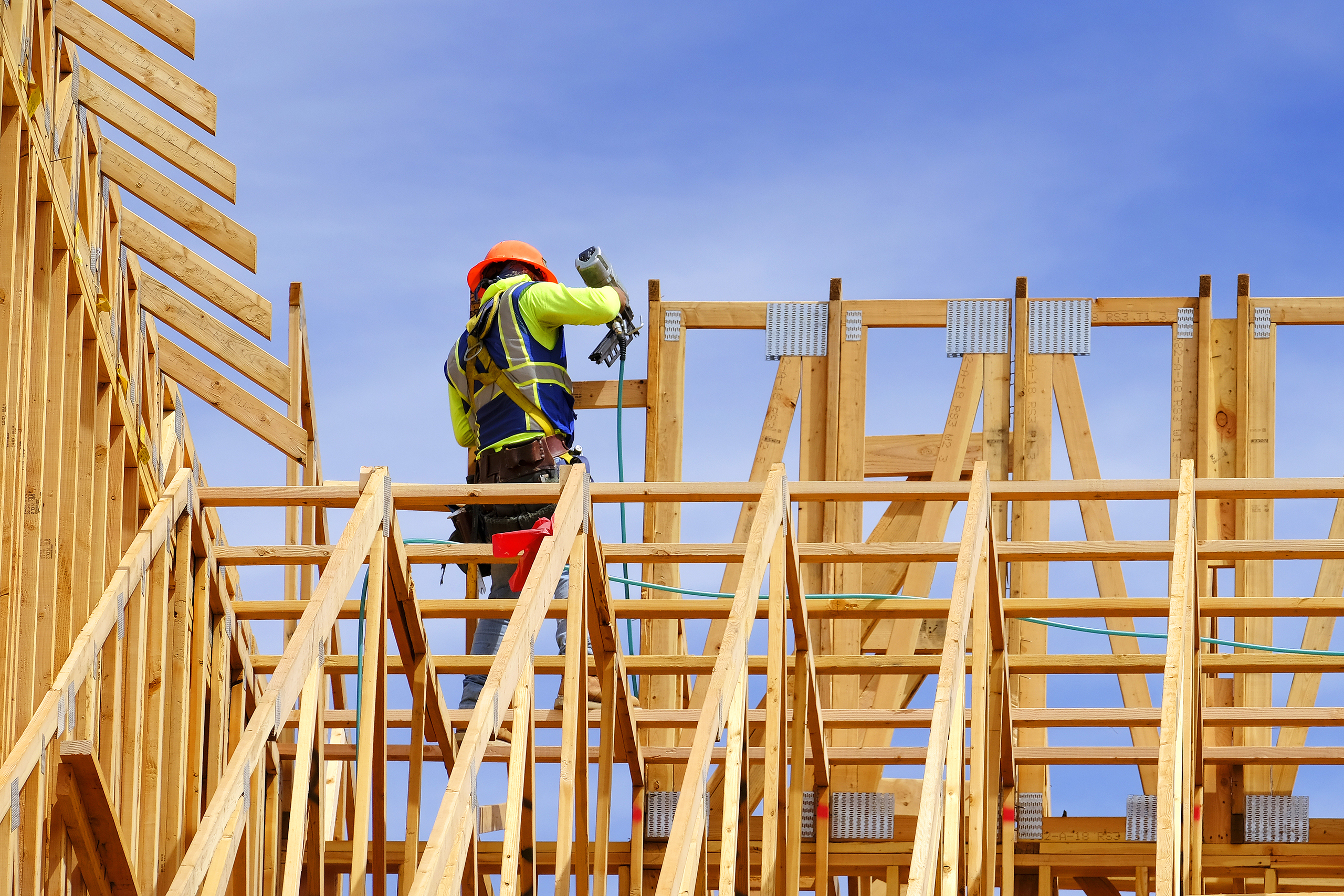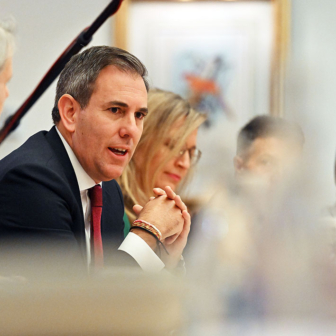Housing minister Clare O’Neil says it’s “just too hard” to build houses in this country because “builders face a ridiculous thicket of red tape.” That must change, she says, if we’re to tackle the “fundamental problem” and “build more homes, more quickly.”
This is the dominant view of Australia’s housing challenge — homes are too expensive to rent and buy because we don’t build enough of them, and we don’t build enough of them because there’s too much regulation. The proposed solution is to reform zoning, planning and building rules to unlock more supply.
While it’s beyond argument that Australia needs more housing to meet the needs of a growing population, the proposition that we can build our way to affordability is open to challenge — at least if affordability means the price of housing relative to incomes.
Our housing sector relies almost entirely on private sector residential development, which is characterised by upswings and downturns, and experience suggests that we are unlikely to build significantly more housing over a sustained period.
Bursts of rapid construction are followed by dips, with the average number of new dwellings rising relatively slowly over the longer term. In the two decades to 2004, about 36,000 dwellings were completed every quarter in Australia. In the ten years to 2014 the average rose to 38,000, and in the most recent decade it jumped to 48,000 thanks to a spike in apartment building between 2015 and 2019. Over the past two years, though, the average has fallen back to 44,000. (The increase in overall housing supply is less since many homes are demolished to make way for new builds.)
But even if we could sustain housing production at a level significantly above the long-term trend, property prices are likely to keep rising. This seems to defy logic — surely if we build homes faster than the population grows then prices should stabilise or fall? That would certainly be true if the number of extra people — or more correctly, the number of extra households — was the sole driver of housing demand. But there are other drivers too, including interest rates, lending rules, tax incentives and incomes.
The laws of supply and demand operate with housing, as with most other goods, to the extent that prices go up when demand exceeds supply. People respond to rising prices in a variety of ways, depending on their situation. Some pay more for their housing, some use their housing more intensively (with adult children remaining in the parental home, for example) and some end up with no housing at all. Higher prices also give developers an incentive to build more, but the relationship between rising prices and increased housing construction is weak in Australia. And, as we’ve seen recently, even when property prices go up, new building can be constrained by shortages of labour and materials, rising construction and finance costs and other factors. Rather than building more, developers can also respond to increased demand by increasing their profit margins.
While higher property prices don’t necessarily drive more construction, increases in income do swiftly lift housing demand: when we get extra money, we generally spend it on more and better housing. This is also the case with increased productivity, the holy grail of economic policy. My research shows that when low-income households benefit from greater productivity, they tend to spend the financial gains almost entirely on housing.
Even in higher-income households, some 40 to 50 per cent of extra productivity-related income will be spent on housing. Some of this will stimulate additional housing supply as people purchase new dwellings, but much of that extra spending helps purchase, extend or renovate existing homes, or buy holiday houses. Higher incomes can drive up prices and worsen affordability even if the population is falling or stagnant (as happened during Covid).
The upshot is that if we bank everything on a strategy of fixing housing affordability by adding to supply, we could end up chasing our own tails, at least if incomes keep rising too.
In a recent working paper, I showed that if real per capita disposable income rises by 1.5 per cent annually, then the number of new dwellings must exceed the number of new households by 0.55 per cent for affordability to remain constant (that is, to maintain the current ratio of houses prices to incomes.) So, even if we build enough new dwellings to accommodate every new household, prices will still go up if incomes rise too. Adding an additional 0.55 per cent to dwelling supply might not sound much, but Australia’s record of residential construction shows it would be difficult to achieve.
Under the National Housing Accord, governments have set an aspirational target of building 1.2 million new dwellings by 2029. In its 2025 report on the State of the Housing System, the National Housing Supply and Affordability Council, or NHSAC, forecast that only 938,000 will be completed.
For illustrative purposes, though, let’s see what would happen if the aspirational target were met. If income growth mirrored the five years leading up to Covid in 2020, when real disposable incomes rose by only about 0.5 per cent per annum, then housing affordability — the ratio of house prices to incomes — would decline by 0.7 per cent per annum.
But if government were to achieve its aim of boosting productivity and incomes grew 1.2 per cent per year (in line with historic averages), then the effect on affordability of building 1.2 million new homes by 2029 would be considerably less — only 0.3 per cent per annum — and even less if the number of households grew at the higher end of expectations. The lower the rate of household growth, the greater the affordability gains. But also, the lower the income growth, the greater the affordability gains.
This assumes not only that we succeed in building 1.2 million dwellings but also that the other factors that influence demand — like interest rates, lending rules and tax settings — don’t change. Lower interest rates, for example, would increase buyers’ capacity to borrow, which would increase demand and prices. Tighter lending rules would have the opposite effect.
What is more, to substantially improve the ratio of house prices to incomes, the aspirational target of 1.2 million new homes over five years would need to be met not just once but sustained into the future.
Here we confront another problem. Again, for the purposes of illustration, let’s assume that a building boom is sustained long enough to substantially bring down house prices. That would require developers to keep building at record rates even in the face of falling prices. A more realistic response would be for them to slow development until prices recovered. After all, experience shows that when dwelling prices decline, the rate of construction falls too.
If boosting supply alone is not enough to make housing more affordable, what else could governments do?
One option would be to reduce demand by slowing population growth, which means, in effect, cutting immigration. Again, the matter is not so straightforward: with fewer new households looking for a place to live, new construction will slow accordingly.
Governments could reduce demand by restricting income growth, leaving people with less money to spend on housing, but that is hardly a winning economic or political strategy.
Any serious effort to improve housing affordability means thinking differently about how the housing system works and addressing drivers of demand beyond population growth. It means seeing the housing challenge as a question not just of supply but also of distribution.
For now, most policy effort is focused on pulling the single lever of increased residential construction. In a market economy, though, where the bulk of building is done by private industry, the impact of government action is indirect at best. Planning and zoning reform can make it easier to get projects approved, or to build at higher densities, but these are only two factors influencing investment decisions and profitability. Planning and zoning reform change what can get built but are not enough to determine what does get built.
To be fair, the Albanese government is trying to boost housing supply in other ways too, such as training more skilled workers and encouraging greater productivity through innovative construction techniques. These are worthwhile measures, but they are still indirect and will take time to have an impact.
Since taking office in 2022, the government has also joined the states in investing billions in social and affordable housing. Social housing has declined steadily as a proportion of total housing over four decades and by the last Census, in 2021, it was below 4 per cent. The total of 55,000 new social and affordable homes anticipated by 2029 under the National Housing Accord is a massive turnaround, but still not enough to reverse the long-term decline, let alone restore it to previous levels. The NHSAC has called for government investment to increase the share to 6 per cent in the medium term, and 10 per cent in the long term. This is bold and welcome advice, but there is, as yet, no indication of the government acting.
If 10 per cent of all dwellings were social and affordable housing, this would constitute a substantial non-market sector alongside the two private markets that currently dominate housing provision in Australia — the owner-occupier market and the private rental market.
Boosting the role of non-market housing would ensure that more dwellings went to the individuals and families who need them most: not only those at imminent risk of homelessness but also households pushed into poverty because they shell out so much of their income on rent. Many rental properties that would be affordable to households with modest means are currently occupied by people who could, in principle, pay more for housing without falling into financial stress. If the non-market sector was large enough to give low- and moderate-income earners real choice, this could put downward pressure on property prices and private rents.
But there is no vision at state and federal level to dramatically expand the size of the non-market housing sector. Instead, governments seem to assume that an unshackled private sector can generate affordability on its own. Non-market housing is consigned to the role of a safety net rather than a competitor on quality and price.
The public investment required to build a large non-market sector would be huge, but the payoff would be enormous too. Adequate housing would generate a range of other benefits, including better health, higher economic growth fuelled by higher consumer spending, greater labour market flexibility and, for some, increased productivity.
With its narrow focus on supply, the government has all but ruled out changes to tax policy. The primary residence is completely exempt from capital gains tax, property investments benefit from a 50 per cent discount on that tax, and negative gearing enables investors to claim rental losses as a tax deduction against their other income. This generous tax treatment of housing encourages over-investment as a store of wealth, inflating property prices. As NHSAC chair Susan Lloyd Hurwitz said recently, tax settings incentivise us to maximise the amount we invest in housing. The logic of the system, she said, is that you should put every dollar you can into housing, which contributes to the situation we’re in.
In tandem with a focus on increasing supply, government could dampen demand by reducing the returns to housing investment through the tax system. It would make sense to target speculative investments — those fuelled by expectations of capital gains, which drive up the price of existing dwellings — while providing tax incentives to construct new homes.
In its 2025 report on the state of the housing system, the NHSAC set out five priorities for action.
1. Increasing investment in social and affordable housing
2. Improving construction sector capacity and productivity
3. Applying best practice principles to planning systems and making more land available
4. Supporting better outcomes for renters
5. Ensuring the tax system supports housing supply and affordability.
The Albanese government has gone further than any government in recent decades on the first of these aims, but the promised funding will all be committed within a few years, when what is needed is sustained funding across decades.
To a greater or less degree, the government is also tackling the next three priorities. But housing tax reform is only on the agenda when it is being ruled out.
Without more far-reaching change, Australia can only hope to make housing more affordable by generating unprecedented levels of dwelling construction. Experience and analysis tell us that such targets are unrealistic. Broadscale planning and zoning reform and greater productivity in the construction sector may get us part of the way there, but to focus on supply as the only cure is to misdiagnose the disease.
Without housing tax reform and sustained investment in non-market housing to complement increased housing supply, it’s likely we’ll keep chasing our tails. •




